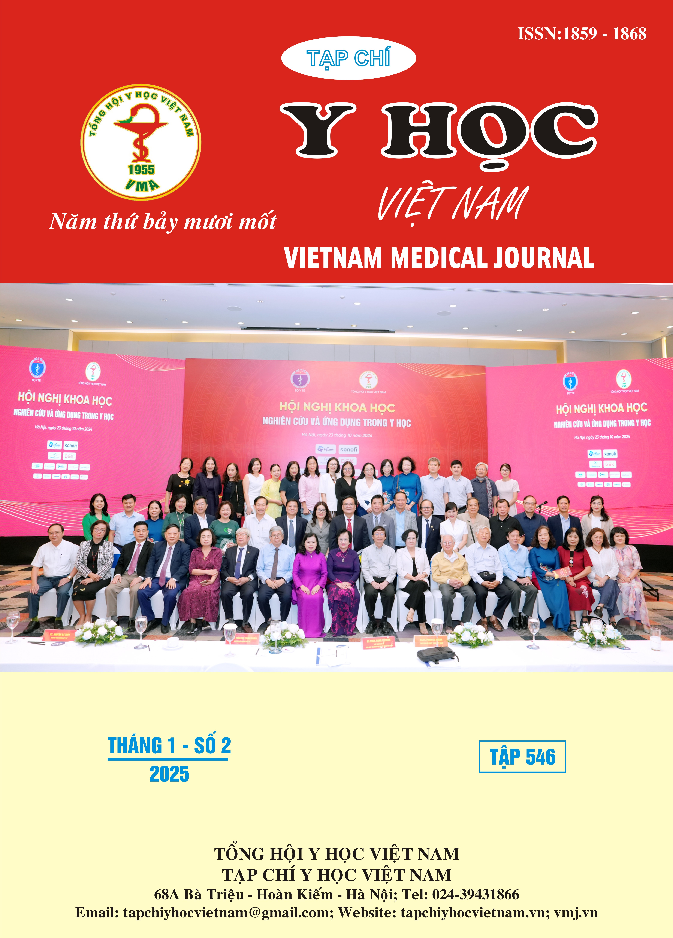IMPACT OF METABOLIC DYSFUNCTION ASSOCIATED FATTY LIVER DISEASE (MAFLD) ON FREQUENCY OF CHRONIC OBSTRUCTIVE PULMONARY DISEASE EXACERBATION
Main Article Content
Abstract
Introduction: Metabolic dysfunction associated fatty liver disease (MAFLD) affects approximately 24% of the population. The disease progresses silently and can lead to cirrhosis and hepatocellular carcinoma. Chronic obstructive pulmonary disease (COPD) is one of the top three causes of death worldwide. Although recent evidence suggests an increasing prevalence of fatty liver disease among COPD patients, MAFLD remains underexplored in this patient group. Methods: A cross-sectional descriptive study was conducted on stable COPD patients using FibroScan to detect fatty liver, with the APASL 2020 criteria applied for MAFLD diagnosis. Results: Among 168 COPD patients, 48.8% were diagnosed with MAFLD. COPD patients with MAFLD had lower FEV1 and FVC values (57.2% vs. 67.0%, p = 0.002) and (80.8% vs. 88.1%, p = 0.009), respectively, compared to those without MAFLD. The frequency of COPD exacerbations was higher in the MAFLD group, with 46.3% experiencing ≥2 exacerbations in the past year compared to 30.2% in the non-MAFLD group (p = 0.032). High CAP scores (>289 dB/m) were strongly associated with frequent exacerbations in the past year (r = 0.4, OR 5.64, p = 0.001). MAFLD was also identified as an independent risk factor for increased exacerbation risk (OR 3.64, p = 0.014). Conclusion: 48.8% of COPD patients also had MAFLD. MAFLD was associated with poorer lung function and increased frequency of exacerbations in the past year. It was identified as an independent risk factor for exacerbations in COPD patients.
Article Details
Keywords
Metabolic-associated fatty liver disease, MAFLD, Chronic obstructive pulmonary disease, FibroScan, Fatty liver disease
References
2. Eslam, M., et al., The Asian Pacific Association for the Study of the Liver clinical practice guidelines for the diagnosis and management of metabolic associated fatty liver disease. Hepatology International, 2020. 14(6): p. 889-919.
3. Estes, C., et al., Modeling the epidemic of nonalcoholic fatty liver disease demonstrates an exponential increase in burden of disease. Hepatology, 2018. 67(1): p. 123-133.
4. World Health Organization. The top 10 causes of death. 2020 [cited 2022 18 June ].
5. Viglino, D., et al., Nonalcoholic fatty liver disease in chronic obstructive pulmonary disease. European Respiratory Journal, 2017. 49(6): p. 1601923.
6. Su, B., et al., Inflammatory Markers and the Risk of Chronic Obstructive Pulmonary Disease: A Systematic Review and Meta-Analysis. PLoS One, 2016. 11(4): p. e0150586.
7. Miao, L., et al., Metabolic Dysfunction-associated Fatty Liver Disease is Associated with Greater Impairment of Lung Function than Nonalcoholic Fatty Liver Disease. J Clin Transl Hepatol, 2022. 10(2): p. 230-237.
8. Hu, Y.Y., et al., The correlation between controlled attenuation parameter and metabolic syndrome and its components in middle-aged and elderly nonalcoholic fatty liver disease patients. Medicine (Baltimore), 2018. 97(43): p. e12931.


